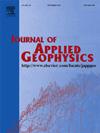Effects of a 3D basin on the near-fault ground motion by an FK-FE hybrid method
IF 2.2
3区 地球科学
Q2 GEOSCIENCES, MULTIDISCIPLINARY
引用次数: 0
Abstract
In the pursuit of accurately representing the full-process ground motion of a 3D near-fault complex site, an FK-FE hybrid method based on the idea of domain reduction is proposed. By integrating the Frequency-Wavenumber (FK) and Finite Element (FE) Methods, the hybrid method provides a new solution to seismic modeling which adaptively addresses multi-scale crustal models (from crustal to geotechnical scale) and intricate 3D site models, with consistent efficiency and precision. Then, the hybrid method is verified by comparing with results of the FK method and further validated by comparing with strong-earthquake records of the 2021 Yangbi M6.4 earthquake. Further, the proposed hybrid method is used to investigate the influence of the basin (wave velocity ratio of internal and external medium, basin's thickness) on near-fault effects due to the finite-fault source, and reveal the comprehensive mechanism of near-fault effects and basin effects. The results show that: the basin-focusing effect enhances the concentration of near-fault ground motions, and further expands the concentration range of strong-earthquake. The increases of the wave velocity ratio and basin's thickness augment the basin-focusing effect, and then the amplification effect of the basin on the fling-step effect becomes more pronounced. These results can provide a reference basis for seismic ground motion estimation and engineering seismic design in near-field complex sites.
求助全文
约1分钟内获得全文
求助全文
来源期刊

Journal of Applied Geophysics
地学-地球科学综合
CiteScore
3.60
自引率
10.00%
发文量
274
审稿时长
4 months
期刊介绍:
The Journal of Applied Geophysics with its key objective of responding to pertinent and timely needs, places particular emphasis on methodological developments and innovative applications of geophysical techniques for addressing environmental, engineering, and hydrological problems. Related topical research in exploration geophysics and in soil and rock physics is also covered by the Journal of Applied Geophysics.
 求助内容:
求助内容: 应助结果提醒方式:
应助结果提醒方式:


